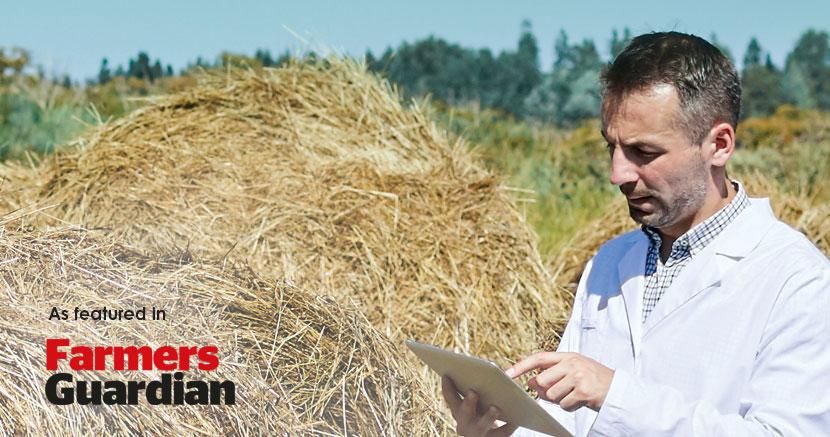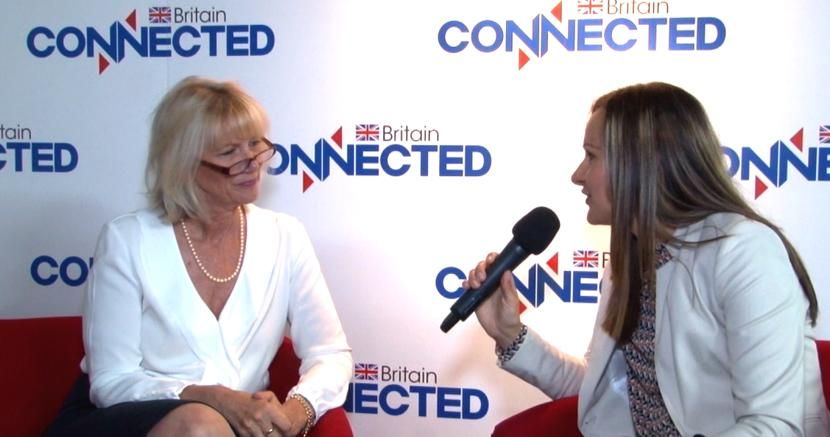The Electronic Communications Code (the Code) has created much debate and opinion. Here, Cornerstone, the UK’s leading mobile infrastructure services company, gives its view on why co-operation between landowners and telecoms operators is key to a productive solution for everyone.
Integrating new technology to cars, the transport industry, home and commercial security systems, the healthcare sector and other areas of our daily lives will see mobile usage continue to increase across the UK.
The volume of mobile data is increasing by 60% a year. It will continue to do so as the next-generation mobile network, 5G, will support greater connectivity and far-higher volumes of traffic. This 5G technology presents a huge opportunity for the UK.
A June 2018 report for the UK government by Deloitte concluded that ‘the capabilities of 5G have the potential to transform key sectors of the UK economy.’
However, to meet the increasing growth in demand and provide 5G capability across the UK, all operators must increase the number of masts and significantly upgrade the existing ones. It’s therefore important that we focus on how to invest in cost-effective infrastructure while considering the interests of every party.
Deployment and maintenance of mobile infrastructure is costly. Operators spend in excess of £2bn a year to provide customers with a reliable network and services. This is not surprising, given that there are tens of thousands of sites across the UK and thousands of miles of fibre required to connect them. But the ongoing cost is unsustainable for an industry that has to meet the changing way we use our mobile devices and the challenging regulatory conditions in which operators have to work to provide coverage, particularly in hard-to-reach rural areas.
The government has recognised this and, as part of its intention to make the UK a world leader in the digital economy, introduced the Digital Economy Act 2017 to make deployment of masts cheaper, easier and faster.
The Code became effective in December of last year. The government’s ambition was that the new legislation would support improved mobile coverage across the UK and encourage greater investment in this critical national infrastructure.
Jeremy Wright, secretary of state for Digital, Culture, Media and Sport, wrote in his ministerial foreword to the Future Telecoms Infrastructure Review in 2018 that ‘We want to be a world leader in the next generation of mobile technology, 5G, with deployment to the majority of the country by 2027 so that UK consumers and businesses can take early advantage of the benefits’ (bit.ly/FTIR18).
The Code is wide ranging and covers many issues that are critical to the ability of an operator to build, manage and maintain a site. For example, easier 24/7 access is vital to ensure that when there is a technical failure or damage to the mast or equipment, repairs can be made quickly and easily. Where we need to upgrade the mast, it can also be done speedily and at a sensible cost.
Since the Code was introduced, the change in the way we value a site has caused considerable debate. The new legislation saw the telecommunications industry moving to a ‘no-scheme’ valuation, whereby payments to a landowner for masts on their land are no longer based on the value to the operator, but on the true value of the land, with fair compensation being paid to the landowner for any loss suffered as a result of the installation.
While there are other challenges, the issue of valuation has been the primary cause of division, stalling the roll-out of new infrastructure. Some property professionals have been reluctant to adopt the revised method of valuation, not least because they see the income-reducing with the new approach, but also because there are many different interpretations of the Code (see Property Journal March/April, pp.18–19).
Fortunately, recent decisions from the Lands Tribunal are now providing much-needed clarity and guidance on the key issues arising from the new legislation including valuations.
Hopefully, as a result, we will start to see the stagnation in the deployment of new masts which arose immediately following the introduction of the Code become a thing of the past, as we all start to evolve our thinking based on the clarity being provided. [EE Limited and Hutchison 3G UK Limited v The Mayor and Burgesses of the London Borough of Islington [2019] UKUT 53(LC) / Cornerstone Telecommunications Infrastructure Limited v Richard Gregory Keast [2019] UKUT 0116(LC) (Electronic Communications Code)]. But let’s recap what the legislation aimed to do because the government was clear about its intentions. In April 2017, the Department for Digital, Culture, Media & Sport stated: ‘Landowners will receive a fair market value that excludes any additional value generated by the provision of electronic communications. The Government is confident this “no-scheme” approach will reduce the cost of infrastructure roll-out, leading to greater investment, and improved coverage and connectivity.’
Without a doubt, the Code states that all parties must seek to reach a deal by consensual means, and operators have made it very clear that they want to do so.
But there must be a baseline for any negotiations, as without a place to start parties become increasingly polarised. The operators have been criticised for setting the starting value of the site too low, but it is important to remember that this is based on an interpretation of the Code and is a foundation on which to open negotiations according to the Code’s valuation principles.
Where these principles have been accepted, great strides have been made and many deals agreed. We are now seeing many local authorities accepting that connectivity is more valuable to them and their residents than the annual rent historically paid. They are being paid a fair amount and are compensated for any loss. In turn, the operators get a site that can provide strong coverage and connectivity for the area. It is a win-win for all parties, achieved by engagement and an open mindset that looks to the future, not the past, seeing the benefits of what a truly digital economy offers.
However, many landowners and agents are not willing to engage, with some actively seeking to derail the application of the Code. Unfortunately, operators have been given no choice but to refer these matters to the Lands Tribunal for resolution. This is costly and time-consuming for all parties, and in the long run, will only delay the upgrade to a world-class network.
It is also important that all parties acknowledge and adhere to the Ofcom Code of Practice published in December 2017.
The Code of Practice is not designed as a guide to the Code but more to complement the Code by suggesting best practice to facilitate positive and productive engagement between all parties.
Paragraph 1.5 of the Code of Practice states that “All parties to whom this Code of Practice applies should treat each other professionally and with respect, always remembering that the goal is to improve and maintain essential communications services for all.” Landowners and their agents would be well advised to bear this in mind when deciding whether to engage in negotiations.
We all have our own interest to consider. For a landowner, this might be the investment value or return from a property; for operators, concern to the share price and the consumer experience; while an infrastructure provider might focus on the investment value of their portfolio and the connectivity it is enabling. A connected society is what we all want, where mobile communications stand alongside traditional utilities. In a recent report commissioned by Cluttons in association with YouGov, 57% of tenants said they would pay higher rent for better digital connectivity, 73% believed poor connectivity could influence renewal, and 81% of employees are more satisfied when their office is well connected.
If the pushback against the deployment of new mobile infrastructure continues, the government will have to review the legislation and introduce more stringent controls over the terms on which mobile infrastructure can be deployed on private land. I don’t think this will be in the interests of any party and will only serve to frustrate and delay the roll-out of 5G, which cannot be allowed to happen.
Connectivity is key and it’s irrelevant whether we’re in the property sector or telecommunications industry, we are all equally invested in providing a first-class mobile experience across the UK that benefits consumers and businesses. Let’s work together to a common interest, overcome the challenges and embrace the new legislation that has been put in place to realise those ambitions.
Belinda Fawcett
General Counsel and Director of Property and Estates at Cornerstone











